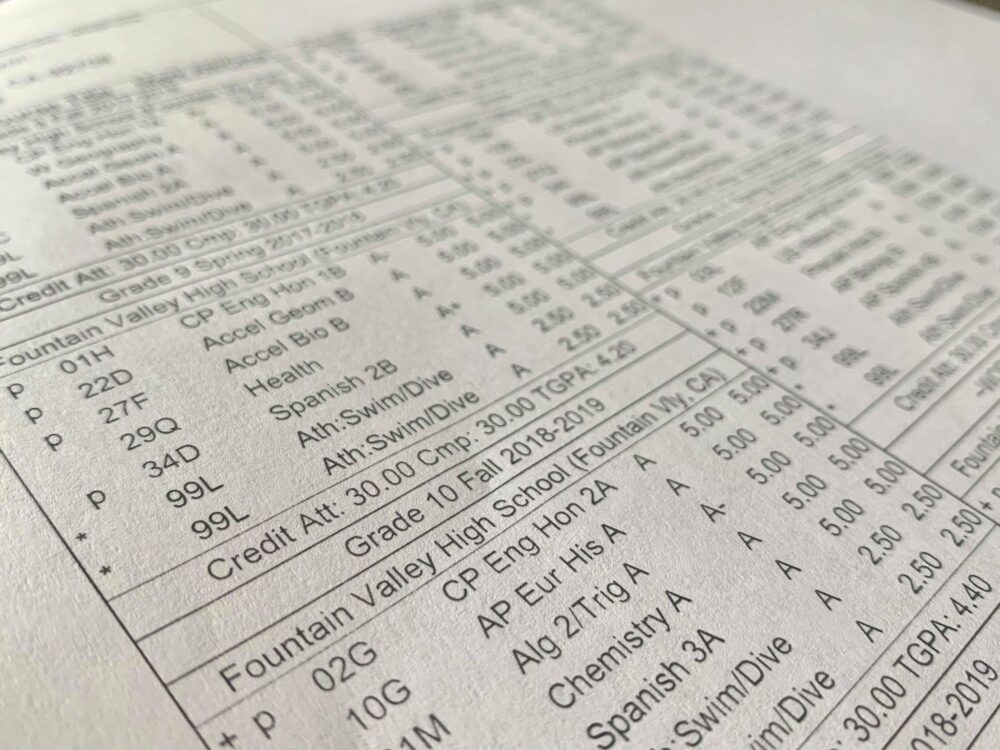
By Kyle Nguyen
The current pandemic has changed almost every part of student’s lives, except for one thing: the grading system.
We need a grading system that reflects our current circumstances and our current one is not fair to students and to our futures. The fact that we’re trying to use a traditional grading system for a nontraditional way of learning is a huge problem in itself. Treating the work that students are doing as if we are in an in-person learning environment isn’t an accurate and effective way to grade online and hybrid students.
Last semester, we used a different grading system, known as the “hold harmless” policy, to account for the transition online due to the pandemic. But this year, we’ve suddenly reverted back to a traditional grading system, even though our learning environments have been nowhere near traditional. This year has been no different than last semester: students are still adjusting to an online environment and students are still failing to keep up.
According to the Washington Post, there has been “an unprecedented rise in F’s” across the country. Students have had their learning environments drastically change in such a short period of time and are struggling to keep up with the changes of transitioning to online. On top of school, students now have to deal with a multitude of stressors as the pandemic kills thousands a day: their mental health, isolation, social-well being and technology that is required for school.
The effects on students are vast, and many will have gaps in their education that may affect their next year in high school and college. For many students, online school is very different from in person school, and some students are performing worse online than they would be if school was in person.
Students need a grading system that will help us feel more at ease amidst the stress of distance learning piled on top of surviving a pandemic.
It could be argued that hybrid learning is the reason for the traditional grading because some students are in-person, but our hybrid learning model was still nowhere near the level of traditional in-person schooling students are used to. Our hybrid learning model had only a handful of students in each class, each joining a Zoom call just like their online peers. It was underwhelming and hybrid students were better off online because it was no different from virtual school.
The majority of school thus far has been online. We are not only losing the physical human aspect of learning but are also losing in terms of time and content consumption. Teachers are unable to cover as much content online as they would during a normal year, causing some of them to overwhelm students with more work as we struggle to catch up to a normal year standard.
Both the hybrid and online learning models are new concepts that teachers and students are adjusting to, but we are still using a traditional grading system. The fact of the matter is that neither hybrid or online is traditional and nowhere near what students are used to. These learning models have negatively affected many students’ education, yet we are still using a traditional grading system that isn’t forgiving, especially towards students who can’t adapt as quickly as others.
As for a solution to this problem, adding a baseline for passing grades would not only get rid of the emotional stress but also help struggling students who are overwhelmed by this pandemic and distant learning.
For example, not allowing grades to go below a D- could help the influx of failing students and help students have an easier time working up to a higher grade. This modified hold harmless policy would allow students to prioritize quality over quantity of work. It should also be noted that the baseline grade of a D- will allow students to still receive credit for the course, but the low grade will also prevent students from completely avoiding their work, which addresses a common concern with last spring’s hold harmless policy.
Districts can also modify the grading scale to account for the increase in failing students. For instance, the percentage for an A could change from 90–100% to 85–100%, a B would be 80%–100% to 75%–100% and so on. This scale would relieve overwhelmed students who are striving to do well academically and decrease the amount of failing students in schools.
Another solution would just be to give students more time or less work. Even though some students have more time at home due to a shortened school day and their extracurriculars also being shortened or canceled, this doesn’t mean we should get more work. Overwhelming students who are already struggling to keep up and juggle pandemic-related stressors such as family and health isn’t the answer, especially when students’ mental health is declining.
Due to this pandemic, we are inside and online for several hours a day with little to no human interaction, and this can take a huge toll on students’ mental health. So whatever free time students have shouldn’t be filled up with schoolwork and should instead be used for self-care and family and friends. Whether it be online or physically distant, being with loved ones during this time can be a huge morale boost and help relieve students’ stress that has been building up due to the pandemic, which will encourage them to do their best in school.
It is without a doubt that this pandemic has turned our school systems upside down and a change in our grading system is necessary to relieve and help students impacted by it.





